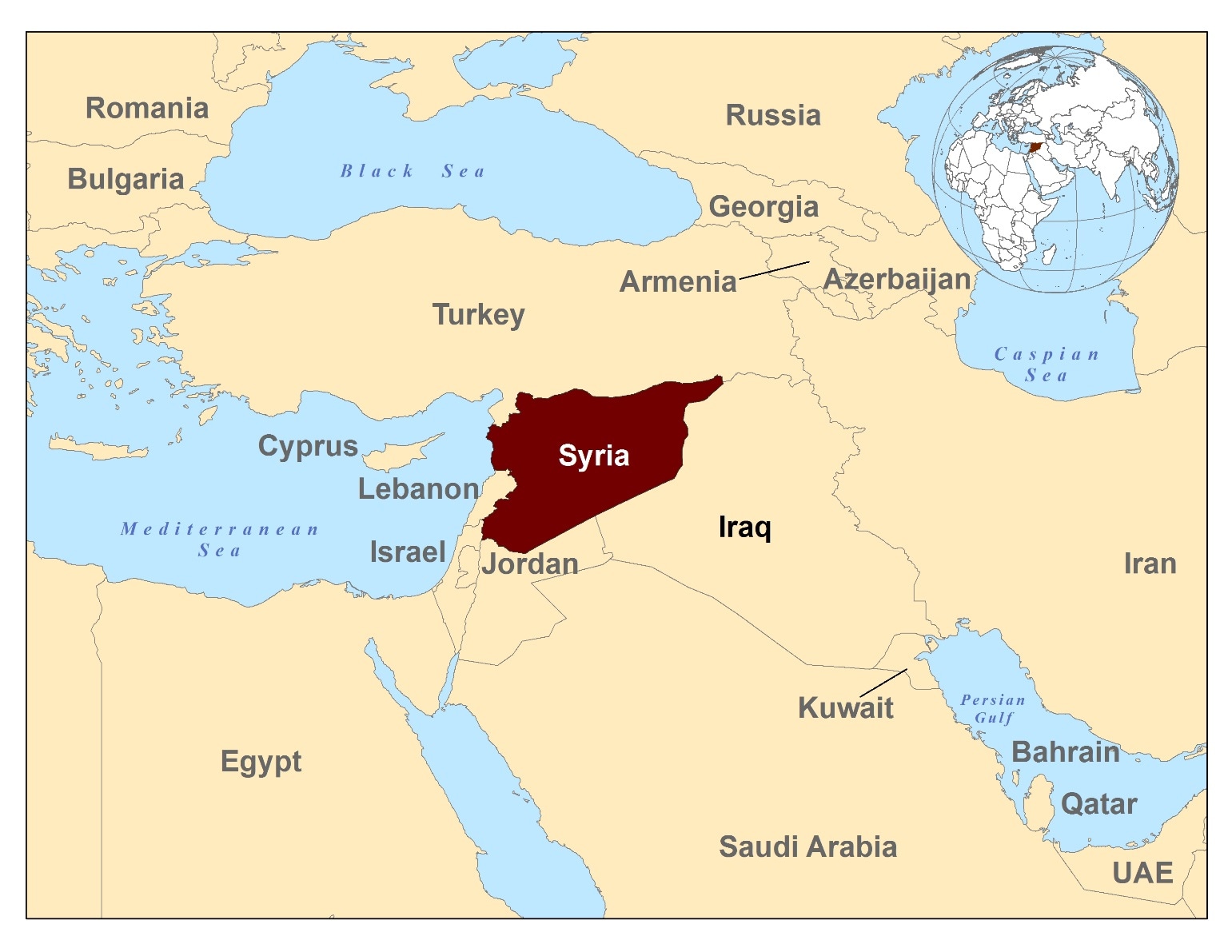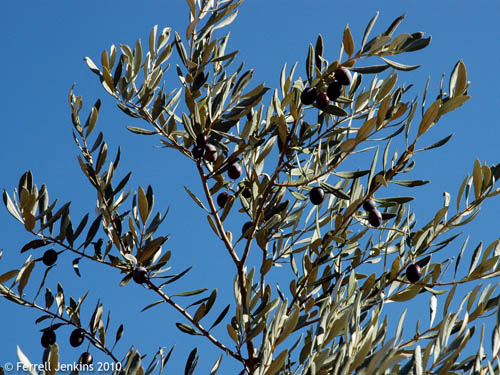The origin of the name Syria is thought to have been stemmed from several sources, but generally seems to lead back to Greek, derived from variations of Assyria. The borders have changed over time, but the land known as Syria was designated to being along the eastern part of the Mediterranean.
Today, Syria is located in The Levant, the area between the eastern side of the Mediterranean and north of the Arabian Peninsula. It’s surrounded by Turkey to the north; Iraq to the east; Jordan to the south; and Israel [near the Golan Heights] and Lebanon to the west. It also shares part of its western coastline with the Mediterranean Sea. The Euphrates is a major river that winds its way through Syria and is one of the most important rivers in the region. Its climate ranges from arid desert to a semiarid steppe climate, although the areas along the coast and along the rivers are fairly fertile.
Syria lies in the region where many facets of civilization were born. Agriculture and cattle breeding were a couple of the things that were developed in this area since 10,000 BC. There is also evidence of tools and trading from this time. Several kingdoms were all vying for dominance for many centuries, but they were also subject to foreign invasions as well. Eventually most of this area fell under the Neo Assyrian Empire, which brought in Aramaic as their lingua franca until the Arab Islamic movement took over in the 7-8th centuries AD. The Greeks, under Alexander the Great, took over in 330 BC and gave it its name of Syria. It later became part of the Roman Empire, and then the Byzantine when the Roman Empire split up. Christianity became the main religion and many areas in Syria are significant in Christian history (Paul’s conversion took place along the Road to Damascus). Muhammad traveled through this area, and not long after was incorporated under the Umayyad Dynasty and later Abassid Dynasty. During this time, Arabic became the official language. The Middle Ages were marked by the Crusades and other periods of attacks and fighting for the land, some (much?) of it linked to the trade routes along the Silk Road (when they discovered a sea route, they didn’t worry about that so much). During the early 1500s, the Ottomans ventured into this area, and it was actually pretty peaceful among all the different ethnic groups here. As they entered WWI, the Ottomans were tied to the Armenian and Assyrian Genocides, and at the end of the war, it was placed under a French mandate. After a series of revolts, Syria finally was granted its independence in 1946. Not long into their independence, they launched an attack on Palestine to destroy Jewish towns. After a series of coups and in the aftermath of the Suez conflict, Syria welcomed Russia’s help, but that made some other countries nervous. The Ba’athist Party took over in the early 1960s, followed by several wars involving Egypt, Israel, Syria, and Lebanon from the late 1960s to the early 1980s. There’s been a civil war in Syria since the early 2000s, and millions have fled the conflict as refugees.
The capital city of Damascus is located in the southwest corner of the country. It’s also one of the oldest, continuously lived in cities in the world, with references to it dating back to the 15th century BC. The old city, including what’s left of its ancient walls and gates, is listed as part of the UNESCO World Heritage Sites. It used to be the second-largest city in Syria behind Aleppo, but the war may have changed that now. Damascus is listed as being in a cold desert climate, which means if you like frequent sunshine and low humidity for much of the year, this is it. The vast majority of the people living here are Syrian Arabs, with Kurds as the largest minority. Damascus is a cultural capital, boasting many colleges and universities, museums, sports arenas, resorts, restaurants, and shopping areas.
Although largely dependent on oil and agriculture, the Syrian Civil War has had a devastating effect on its economy. One major source of revenue was from phosphate mining, but Syria lost that to ISIS several years ago. They mainly rely on credit from their main trade partners: Russia, Iran, and China. The once thriving tourism industry has fallen drastically while unemployment and poverty rates soar. Struggling against global sanctions from the US and Europe, the oil industry has also taken a hit.
Nearly three-quarters of Syrians are Sunni Muslims, mostly from the Sunni Arabs, although there are also Kurds and Turkoman populations in there. There are smaller numbers of Shia Muslims, Christians, and other religions.
The official language is Arabic, and several dialects are used in Syria. Mainly the Levantine dialect is heard in the western portions of the country while the Mediterranean dialect is used on the northeastern side. There are quite a few minor languages spoken here, but none carry any kind of official status. English and French are widely studied as foreign languages, with English being the dominant one.
The conflict in Syria and its history are complicated, much too complicated to give it any justice in this blog post. The problem with countries that have been inhabited for thousands and thousands of years is that there is a ton of history that goes with it. I read an article once about the threat of looting antiquities from the bombed out libraries and museums. The somewhat good news is that due to the bravery of a few, much of it has been saved, but I imagine some collections may never be whole again. In October 2018, the National Museum of Damascus reopened after being closed for nearly seven years. We know who the true heroes are.
Up next: art and literature






















.jpg)


.jpg)



